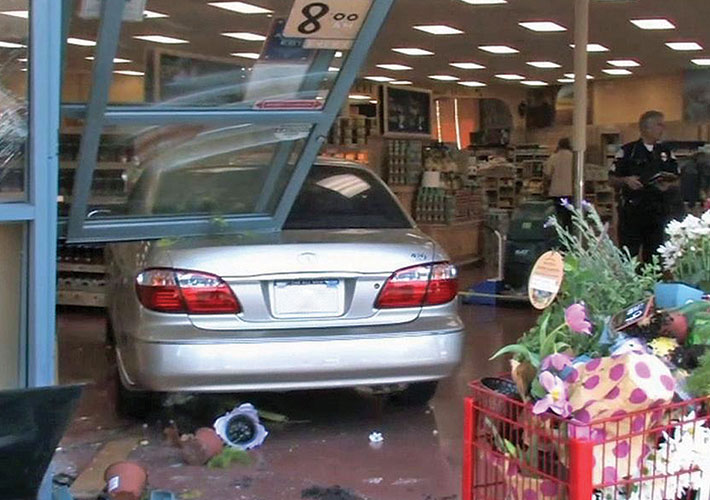
Keeping Cars and Storefronts Apart
Grainy security-camera footage capturing a car as it plunges through glass into a store has become a staple on television and Internet news sites. The commonplace nature of such accidents signals a need for better storefront protection from errant cars.
Protective barriers are becoming an increasingly important component of preventing or minimizing the damage from such accidents. Now, a new ASTM standard quantifies the dynamic performance of vehicle protective devices at speeds of 50 km/h (30 mph) and lower.
F3016/F3016M, Test Method for Surrogate Testing of Vehicle Impact Protective Devices at Low Speeds, was developed by Subcommittee F12.10 on Systems, Products and Services, part of ASTM Committee F12 on Security Systems and Equipment. While the subcommittee's standard F2656, Test Method for Vehicle Crash Testing of Perimeter Barriers, provides testing for high speed impact, F3016 fills the need for a standard that covers lower speeds.
Dean Alberson, Ph.D., P.E., is an ASTM member and a research engineer at the Texas A&M Transportation Institute. Alberson notes that he received many inquiries about whether F2656 was applicable to lower speeds. In addition, Alberson says that the Propane Gas Association was looking for a design for barriers to protect self-service propane storage units. These various inquiries highlighted the need to develop F3016.
The procedure described in F3016 will establish a penetration rating for vehicle protective devices subjected to low-speed vehicle impact. The determined penetration rating will provide end users with the ability to select an appropriate barrier for site-specific conditions.
ASTM member Michael Brackin, assistant research engineer, Texas A&M Transportation Institute, notes that, even at low speeds, storefront accidents pose a serious threat to pedestrians and shoppers, and lead to increased liability for store owners when no protection is offered.
"F3016 will be valuable to manufacturers of protective devices who want to ensure their performance and offer their customers an approved product," says Brackin. He notes that the wide range of users for F3016 includes:
- Design engineers;
- Contractors;
- Architects;
- Store owners;
- Insurance companies;
- City and county officials;
- Building codes administrators; and
- Those involved in liability lawsuits.
All interested parties are welcome to participate in the ongoing standards development activities of F12.10. "The subcommittee is particularly interested in working with stakeholders who want a testing protocol that will provide definitive guidance for testing products to be incorporated into public safety programs, site security specifications and property protection features," says ASTM member Rob Reiter, co-founder, Storefront Safety Council.
To purchase ASTM standards, visit www.astm.org and search by the standard designation, or contact ASTM Sales (tel +1.877.909.ASTM; sales@astm.org).
CONTACT Technical Information: Michael Brackin, Texas A&M Transportation Institute • Bryan, Texas • tel +1.979.845.2019 | ASTM Staff: Joseph Hugo • tel +1.610.832.9740 | Upcoming Meeting: April 27-28 • April Committee Week • Anaheim, Calif.
 SN Home
SN Home Archive
Archive Advertisers
Advertisers Masthead
Masthead RateCard
RateCard Subscribe
Subscribe Email Editor
Email Editor